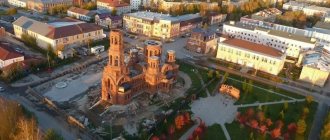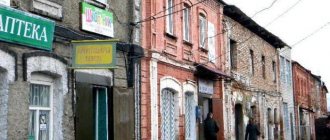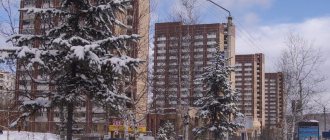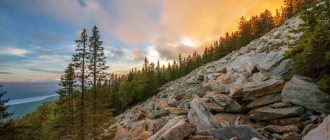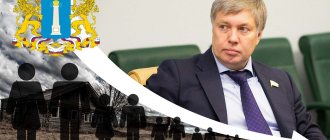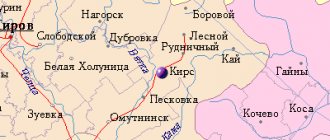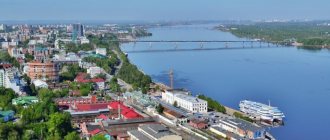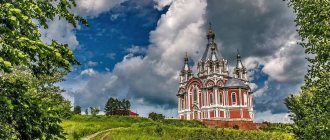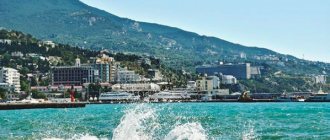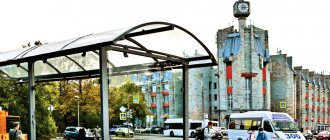Story
The history of the formation of the city of Krasnokamsk is connected with the history of the formation of the domestic paper industry. In 1929, on the right bank of the Kama near Perm, between the villages of Strelka and Konets-Bor, a site was chosen for the construction of the Kama pulp and paper mill. In the same year, a construction village appeared here. Experienced engineers and technicians came here to set up production. Technical assistance was provided by factories in Leningrad, Kyiv, and Nikolaev.
...The young engineer Dmitry Nikolaevich Harding, who in 1925 was the first to choose the site for the construction of a paper mill, did not know that the city would be located here, nor what it would be called. He then used his vacation to travel to Perm to explore the banks of the Kama. He was looking for a site to build a plant. In one of his letters home, Dmitry Nikolaevich writes: “...Today I’ll go see the banks of the Kama below Perm... The places here for all sorts of buildings are very good, and I’m already completely daydreaming about where and how all this will be located and what an interesting thing it will be... My head is now full of all sorts of thoughts in connection with the construction project. Such a huge matter, there is so much in it that is scary, and enticing, and beautiful, and smart...” Assignment of the government D.N. Harding complied, he presented his arguments in favor of the site he had found for the construction of the paper giant. A flat area was chosen (the place was called Goryushka) on the free high right bank of the Kama with its deep, clear waters. This happened in the spring of 1929. Then “topographers came here to survey the area of the industrial site, workers’ settlement, the Kama River and carry out deep drilling to determine the layers of soil and its nature.” They compiled geological maps. Among the topographers was Grigory Timofeevich Kolchanov, who fell in love with the beautiful place, and he stayed here to live, build, became a great master carpenter and left his memories of those times. Only on September 26, 1929, the construction site was approved by a government commission and the Boomstroy administration was organized to carry out preparatory work for the construction of a boom plant on the Kama. At the chosen site, 44 kilometers below Perm, a giant paper mill began to be built. The construction site was also called Boomstroy, but the settlement for workers was nameless, it was simply called the Boomstroy settlement. For centuries, a pine forest rustled here, swamps swirled with fog, royal swans and other migratory birds flew to lakes Swan and Zhuravlinoe, and there was a lot of game and fish there. I.A. recalled this. Fedotov, resident of the village of Strelki. The village was lost on the high right bank of the Kama, between the Bolshaya Lasva and Malaya Lasva rivers in a dense pine forest, which jutted out like a wedge-like arrow into the bend of the Kama. 85 people lived here. Strelka sheltered the pioneers of the paper giant. And along the country road of the Kama region along the banks of the Kama, convoys with various goods were transported from Perm; the crossing was only at Osinsky Descent. Little Strelka has disappeared in time, but another border village of Konets-Bor still stands on Krutoyar, fenced off from the city by the remains of a former pine forest, now within the boundaries of Krasnokamsk. In the thirties of the 20th century, a resident of Konets-Bora was digging the ground for potatoes, and also unearthed a clay pot. And in it lay fifty copper nickels from 1628. It turns out that people lived here already at that time or a little later. In this small ancient village, those who came to Boomstroy, the builders of the paper giant and the future city of Krasnokamsk, also received shelter.
The ship's pines still stand out today on the steep sandy shore near the village of Konets-Bor, rustling in the wind, telling about the past. They saw how the forester Morozov, a student expelled from Moscow, decided to drain the Paltinskoe swamp and turn a flat place into a pasture. They gathered the people of the Mysovskaya volost of the Okhansky district - the former Shuvalov and Stroganov lands - and in the narrowest place where the Palta river approached the Kama, which previously flowed into the Chernaya river and with it into Syuzva, they dug a canal. But nature is not so easy to defeat: the high sandy terrace got in the way. The waters of Palta turned out to be much higher than the Kama river, and a waterfall formed, which quickly washed the ravine. The swamp remained undrained, and people for a long time scolded the former student for his “virtue.” By the way, the old bed of the Palta can be seen in the current Zapalta microdistrict, but the swamp around has dried up, and the river now flows into the Kama.
When the lumberjacks and behind them the diggers, manually, with axes, saws and shovels, prepared the site for construction, laying the foundation of the buildings for the plant's workshops began. A memorial plaque with the inscription was walled up at the base of the pulp mill building with the inscription: “Here was founded the KPMK named after. Ordzhonikidze. 1930." In those years, S. Ordzhonikidze was the chairman of the Supreme Economic Council and closely monitored the construction of the plant (rumor claims that he came here, but evidence of this could not be found). The groundbreaking ceremony for the plant took place on June 20, 1930. Workers and numerous guests gathered at the construction site. The rally participants noted the great importance of the plant being founded for the cultural revolution. It was planned that the Kama plant would produce 80 thousand tons of paper per year. This figure was enormous: at that time, the entire pulp and paper industry of the country produced only 60 thousand tons per year.
Early 1930s. From the beginning, we began to build a Workers' Village, where wooden houses were erected, arranged in the shape of the letter "T". Then everyone dreamed of aviation and flying in the sky, in what other form could the first builders build their houses, and they called them, of course, “airplanes.” The “fuselages” were the central part of the building, made of brick; wooden “wings” and “tail” were attached to it. And if you look from above, from an airplane or airplane, the house in its shape resembled it. There were no streets in the village yet, so letters and telegrams were initially sent to the following address: Perm, Strelki village, Bumstroy, M.P. Bobrov. And later they indicated this: Sverdlovsk region, Krasnokamsk village, airplane No. 1, 2nd wing (or tail), etah, room number. Many Krasnokamsk residents know about this. Nowadays, only part of the airplane house has survived on Bolshevistskaya Street - the brick “fuselage”. The first residents of the village of Boomstroy were not only busy with work. On May 1, 1932, the first club in the forest village was opened in a solemn ceremony, and they gave it the name, of course, “Bumazhnik,” as if thereby asserting that its owners would be wallets, although paper was still far away. It stood on the site of the current regional Palace of Culture. The first wallet club had framed walls, but a park was later built near the building. Veteran N. Shumilov recalled how he and the young guys built a lattice arched palisade around the club park. Plastered on both sides, the club was a favorite vacation spot for the entire population of the village. From now on all celebrations were held here. The young pioneers increasingly mastered folk instruments in amateur clubs and played in a religious orchestra. And during the May Day demonstrations, a brass band walked at the head of the column of builders: polished brass pipes sparkled, “altos” sang a melody loudly, drums rumbled rhythmically, supported by the ringing of shiny cymbals. There were more than 50 people in that orchestra, created by technician A.V. Gvozdev. Later, the handsome sailor Nikolai Galchenkov became the director of the orchestra. On weekends in the summer evenings there were dances, and girls in white socks and chalk-polished rubber slippers and guys in striped T-shirts, the smartest clothes of the thirties, danced foxtrots and quadrilles. Projectionist Budkin himself installed the first film installation and showed the film. An avid radio amateur was the first to propose creating his own radio center. Later, a set of equipment for a node with 250 radio points was sent from the capital. And people heard the voice of Moscow from street loudspeakers, and later in their apartments.
In 1933, the workers' settlement of Bumstroy was given the name Krasnokamsk. On October 7, 1938, by the Decree of the Presidium of the Supreme Soviet of the RSFSR, the village of Krasnokamsk received the status of a city.
Already in 1936, the Kama Pulp and Paper Mill produced the first pulp and paper. At that time it was the largest pulp and paper mill in Europe. With the launch of the Kama Pulp and Paper Mill, pulp production in the country increased by 45 percent, and paper production doubled.
On February 3, 1936, the largest pulp and paper mill in Europe began producing products. In the same year, the Zakamskaya CHPP-5 went into operation, the first paper machine was launched and the first paper was produced at the Goznak paper mill.
In 1934, oil was discovered in Krasnokamsk, and since 1936, the Krasnokamsk industrial base became the basis for the development of other fields in the region. The development of new oil regions in the region began with the organization of production sites of the Krasnokamsk Oil Field Administration.
Krasnokamsk survived the years of war along with the whole country. In the village of Chernaya there was a camp of the Leningrad branch of the literary fund for 140 evacuated children of writers, scientists, and artists. 3,213 Krasnokamsk residents died on the fronts of the Great Patriotic War. Five of our fellow countrymen were awarded the high title of Hero of the Soviet Union:
Victor Dmitrievich Anisimov, Alexander Mikhailovich Kalugin, Victor Mikhailovich Kuzmin, Ivan Grigorievich Lyadov, Stepan Vasilievich Chudinov.
The number of Krasnokamsk enterprises increased significantly during the war years. 7 industrial enterprises were evacuated here. Workers and equipment for the metal weaving shop arrived from the city of Kolchugino, Vladimir Region. July 22, 1942 is the birthday of the Krasnokamsk Metal Mesh Plant.
In 1941, oil equipment and personnel were evacuated from Baku, Grozny, Makhachkala, and Berdyansk to Krasnokamsk. From Leningrad - a mint, in 1942 - a pulp and paper technical school.
In December 1942, at the Krasnokamsk oil field, for the first time in world and domestic practice, oil production was carried out by inclined drilling of wells. It became possible to extract oil from under industrial and domestic buildings and wetlands.
In 1943, the Krasnokamsk oil refinery came into operation.
In January 1945, the Mint received an order to produce medals “For Victory over Germany in the Great Patriotic War of 1941-1945.” In 1946, for valiant work during the Great Patriotic War, the Banner of the State Defense Committee was transferred to the Kama Pulp and Paper Mill for eternal storage.
In 1955, the first products were produced at the reinforced concrete structures plant under construction, and in December 1956 the plant was fully operational.
In 1960, the Kama Pulp and Paper Mill was again declared an All-Union shock construction site—the first coated paper factory in the USSR was being prepared for commissioning. On December 23 of this year, for the first time in the USSR, machine paring of paper using a single-press method was carried out.
In 1961, electric trains began running on the Overyata-Krasnokamsk section of the railway.
Kama River Sosnovy Bor in Krasnokamsk
Krasnokamsk: Museum of Local Lore
The main museum exhibition in the Museum of Local Lore (this is no longer an apartment, but a nearby room) consists of three rooms, the first contains exhibits of the life and work of Krasnokamsk residents at a paper mill. In particular, an INCREDIBLY small room for a woman worker with a child, the bed in which is about half my height, and it’s definitely not possible to have fun there. There are also models of dugouts in which workers lived, saws, banners, the “Izbach” projector, certificates, certificates, and the boss’s workplace.
The second room presents the minerals that make up the soil of Krasnokamsk - you can take a closer look at them through microscopes. By the way, Permians can be especially proud, because in the list of eras and centuries (such as the Paleozoic or Cenozoic) a Permian period , but, for example, Moscow or Yekaterinburg period.
And here you can also see mammoth bones, which were dug up by one of the city residents at one time. The third hall tells about the fauna of the region, animals, birds and insects that can be found in the forests and fields.
Culture
The culture of a small town is represented by the names of those who work day after day to introduce the townspeople to spiritual values, who create works and generously give people their creative energy. The constellation of Krasnokamsk cultural figures includes musicians and artists, directors and choreographers, many of whom brought fame not only to their hometown, but to the entire Perm region.
Directors and actors.
A theater school was created in Krasnokamsk in 1992, its first director was Natalya Evgenievna Belosludtseva. She ensured that the school was given a building on Kultury Street. Belosludtseva’s creative team has repeatedly become a laureate of regional awards. The play "Mowgli" was shown in many cities of Russia, and it was awarded many awards. in 2001, a new creative team came to the school under the leadership of Vera Ivanovna Manina. Having rallied around a strong leader, the teachers managed to win the hearts of theatergoers throughout the region with their bright, original, lively performances. Today, every team here, every child is a star. Only in 2008, the “Cinderella” fashion theater, led by teacher Natalya Domentiy, received the Grand Prix at the Moscow festival and was recommended for a trip to Italy. The performances of the groups “Rubicon” and “Chrysolites” were awarded prizes at the regional festival “Our Perm Region”. The guys from the regional reading competition brought five first-degree diplomas. The Chrysolites team is led by teacher Anna Gennadievna Sergina. Krasnokamsk residents love the performances staged by the director and the guys for their humor and entertainment, musicality and vivid imagery. All productions are very lively, understandable not only to connoisseurs of theatrical art, but also to the smallest, inexperienced spectators. Sergina teaches children not only acting skills, but also the ability to sympathize with someone else's pain and empathize with someone else's joy. The repertoire of “Chrysolites” includes dramatizations of works of Russian classics, which allows schoolchildren to take a fresh look at the usual textbook works of Russian literature. Both the author's fairy tale and the mischievous modern play are successful. In 2007, the performance of young artists “The Festival of Barmaley the Cat” was awarded the Grand Prix at the All-Russian Festival in Vologda. Teacher's students Zhenya Markova and Nikita Elenev achieved remarkable success in 2007. At the regional festival of children's musical performances in 2007, a new production by Anna Sergina, “The Blue Puppy,” won a prize. A guest of the festival, the famous Moscow director Fyodor Sukhov, was sincerely delighted with the performance that the Krasnokamsk residents showed: “Powerful energy impulses move across the stage, they come not from an adult leader, but from the children themselves, whom Anna Sergina taught not to play, but to truly live on stage."
May there always be music!
The Krasnokamsk music school occupies a worthy place in the cultural life of the region and the Perm region. In 1989 it was awarded the status of a basic school, and in 2002 - the highest qualification category. From 1976 to 2002, the school was headed by Honored Cultural Worker Nadezhda Fedorovna Filippenko. This woman had the wisdom of a teacher, musical and organizational talent. Many of Filippenko’s students became laureates of regional and all-Russian festivals. Honored Worker of Culture of the Russian Federation, N.F. Filippenko was awarded the badge “for achievements in the culture of the Russian Federation.” Nadezhda Nikolaevna Shastina headed the music school in 2002. It is impossible to imagine the school without its talented teachers who are sincerely passionate about their work: Honored Worker of Culture of the Russian Federation Natalya Stepanova, Tatyana Nikitina, Svetlana Chernyshevskaya, Nadezhda Martyanova, Elena Raiskaya, Svetlana Sharova, Olga Georginova and others. N.N. was also awarded the honorary badge “For Achievements in the Culture of the Russian Federation.” Shastina. Tatyana Nikitina is not only an excellent teacher, but also a talented choirmaster. The exemplary choir she created at school repeatedly became a laureate of regional competitions. In 2008, this singing group became a laureate of the “Our Perm Region” festival and took part in a gala concert at a music festival in the city of Tchaikovsky. The performances of her student Andrei Khalachev, who has won many prestigious awards at festivals at the all-Russian level, are greatly loved by Krasnokamsk residents.
These doors are open to all the curious.
The life of librarians and pilots in the sea of books for people of all ages cannot be called calm and easy. The centralized library system of the Krasnokamsk region unites the central district library, city, town and rural branches, and the Pavel Bazhov children's central library. Paying tribute to the times, the central library has created an information support center, whose task is the environmental and legal education of citizens. The Krasnokamsk City Museum of Local Lore also keeps up with the times: new interactive methods of working with visitors are being introduced here, and the interior of a communal apartment from the era of the 1930s-1950s, which is already a long history for young people, is being restored. The museum staff were the first in the Perm region to create a so-called barrier-free environment so that disabled people and people with disabilities could freely visit the museum.
Sights of Krasnokamsk
When visiting this city, you cannot miss interesting objects:
- art gallery named after I. Morozova;
- local history museum;
- Museum of Political Repression;
- monument to the Discoverers of Prikamsk oil;
- children's toy museum;
- Victory Park;
- interesting art objects: city clock, globe, horseshoe for luck;
- Goznak Square with an architectural ensemble and a fountain equipped with LED lighting;
- Church of Catherine the Great Martyr.
Economy
The economic base of the city is represented by the following industries: pulp and paper, building materials, food, engineering. Fewer material resources are involved in the energy industry, and insignificant ones in the chemical and local industries. Industry employs about 40 percent of all workers. The leading place in the structure of the city's industry belongs to the timber industry complex, which produces cellulose, paper of all types (valuable types of printing, writing and drawing papers, paper for offset printing, paper for copiers), various types of consumer goods - notebooks, albums, notepads, as well as metal and synthetic mesh for the pulp and paper and chemical industries, the building materials industry, for environmental purposes, reinforcing mesh for road surfaces and bridge construction. There is a significant complex for the production of building materials, which produces prefabricated reinforced concrete, road slabs (including for airfield runways), reinforced concrete supports, and wall materials. At enterprises in the engineering industry, oilfield and oil refining equipment and vehicles are repaired, oil refining and chemical equipment, and oil equipment are manufactured. Enterprises in the food industry produce meat and meat products, sausages, edible fat, dry animal feed, more than ten types of pasta, bread and bakery products, and dairy products. The industry is represented by 14 large and a number of medium and small enterprises. The most significant are OJSC Kama Pulp and Paper Mill, Krasnokamsk Paper Mill GOZNAK, OJSC Krasnokamsk Metal Mesh Plant, OJSC Permtranszhelezobeton (Betokam), Krasnokamsk Meat Processing Plant OJSC KELMI. Agricultural producers produce milk, cattle meat, vegetables, including greenhouse vegetables, and potatoes. FSUE Perm Pig Farm produces 90 percent of all pork in the region. Other city-forming groups are represented by construction and installation organizations, logistics, transport, communications and small enterprises.
Transport
The advantageous transport position of the region is determined by the passage through its territory of the Moscow-Vladivostok railway (electrified, double-track with intensive long-distance and suburban passenger traffic), the federal highway from the central regions of the country to Perm (which carries commuter and intercity buses from Perm to the northwestern , western, southwestern regions of the region, Komi-Permyatsky Autonomous Okrug, as well as the cities of the Komi Republic, Udmurtia, Tatarstan, Kirov and Samara regions), the Kama shipping route. In terms of advantageous economic and geographical position, only the city of Perm can compete with Krasnokamsk.
Main streets of Krasnokamsk
There are 306 streets in the city. On the map of Krasnokamsk with street names you can see their location and find out the necessary information. For example:
- st. Shosseynaya : length 7.2 km, starts from Goznak Square and stretches through the entire city to the M7 highway, runs along Victory Park and the city stadium "Neftyanik";
- st. Kommunisticheskaya : distance 2.3 km, connects st. K. Marx and Shosseynaya, not far from it there is a city square and the Rossiya stadium;
- st. Promyshlennaya : distance 3.5 km, starts in the north from the Krasnokamsk bypass road and reaches Gorodskaya Street in the south, passes through the industrial zone;
- st. Lenin: length 1 km, located between Shosseynaya street and M. Gorky, on one of its sides there is the Neftyanik cultural center.
Social sphere
The population of the city is better provided with cars and telephones than the general population of the Perm region. The housing provision for the population is 16 square meters. m per inhabitant (93% of the area is equipped with running water, 92% with sewerage, 85% with hot water supply). A pulp and paper technical school was opened in Krasnokamsk in 1946, providing pulp and paper enterprises throughout the Urals with qualified technical personnel. Later, a medical school appeared here. The total number of students at the technical school and college is 1,446 people, of which 975 people study full-time. The annual graduation rate in recent years has been about 400 people. In the city, about 18% of students study in the second shift.
Secondary school No. 8
Krasnokamsk is a satellite of Perm and is part of the Perm agglomeration. Industrial enterprises of Krasnokamsk and Perm are connected by mutual supplies of various products. City residents travel to the regional center both for work and for various cultural and everyday purposes. Branded stores of food manufacturers have been opened in the city, which allows residents to buy products with a minimum trade markup (pig farm store, vegetable and dairy stores of the Truzhenik state farm, meat and sausage store of the meat processing plant).
Olympic
Archive photos
Two-story house on the street. Karl Marx. Source: pastvu.com
Krasnokamsk. Karl Liebknecht street. Source: pastvu.com
Residential buildings on Kommunisticheskaya Street. Source: pastvu.com
Embankment of the Kama River in the city of Krasnokamsk. Source: pastvu.com
Krasnokamsk. Source: pastvu.com
Workers of the Goznak printing factory at the May Day demonstration on Karl Marx Street. Source: pastvu.com
20th Anniversary of Komsomol Street (now Mira Avenue). At the end of the avenue there is a pulp and paper technical school. Source: pastvu.com
Goznak members at the May Day demonstration. Source: pastvu.com
Street 20 years of the Komsomol (now Mira Avenue). Source: pastvu.com
Sunrise approaches the _Krasnokamsk_ pier. Source: pastvu.com
Ecology
Industrial enterprises and motor vehicles create a high level of environmental pollution, far exceeding the norm. The pulp and paper mill poisons the air with sulfur compounds, dust emissions from thermal power plant No. 5, carbon monoxide from traffic flow along the transit highway, and tailings from the chemical plants of Zakamsk and Permnefteorgsintez (Perm). Thus, in 1991, insufficiently purified waste water was discharged into water bodies in a volume of 125 million cubic meters. m. There is especially a lot of sulfates, chlorides, nitrogen, and hydrogen sulfide in the water. Emissions into the atmosphere amounted to 15.4 thousand tons of pollutants.
Natural resources
The territory is characterized by flat terrain with strong dissection. The predominant soils are soddy medium and strongly podzolic soils of different mechanical composition (mostly heavy loamy), vegetation of the southern taiga zone with small-leaved forests. 60% of the land in the suburban area is occupied by forests. Their wood reserves are about 10 million cubic meters. m. Up to 90 thousand cubic meters are cut down annually. m. Oil reserves are of industrial importance. The Severokamskoye, Zorinskoye, Kuznetsovskoye fields are being developed, of which the largest is Severokamskoye, discovered in 1938. The Krasnokamskoye oil field is mothballed. There are large reserves of brick clay in the Bekryat deposit, developed by the Overyat brick factory. The Kachkinskoye deposit with large reserves of sand and gravel materials is being developed by the Kama Shipping Company. There are several peat deposits. Carbonate rocks from the Kama deposit can be used for land reclamation. Natural healing factors are of great importance - mineral sulfide chloride sodium brine waters containing bromine and iodine, used for drinking treatment in the largest balneological resort in the Urals, Ust-Kachka (founded in 1935).
Sanatoriums of Krasnokamsk
Sanatorium-preventorium "Vita" (Krasnokamsk, 38 km from Perm) is one of the best places in the Perm region for recovery, relaxation and business meetings.
The Vita dispensary is a multidisciplinary rehabilitation center that can effectively solve the problems of both general health improvement and the correction of diseases (spinal pathology, psychological overload and stress, vascular and metabolic disorders, sexual disorders, etc.).
Sanatorium-preventorium Vita
Sanatorium-preventorium "Bumazhnik" is located in a pine forest on the outskirts of Krasnokamsk.
Reception is conducted by qualified doctors. Sanatorium "Prikamsky" offers the following procedures:
- balneotherapy - mud therapy
- mountain air - cocktails
- sauna - aromatherapy
- caving chamber - physiotherapeutic treatment
- massage - inhalation
- psychotherapy
- psychologist
Sanatorium-preventorium Bumazhnik
Sanatorium-preventorium "Atlant" is located in the village of Maysky (15 km from Krasnokamsk (38 km from Perm)), on the shore of a pond, in a forested area.
Year-round action. Accepts adults and parents with children for recreation and treatment.
Main medical profile:
- Diseases of the female genital organs
- Diseases of the musculoskeletal system and connective tissue
- Digestive diseases
- Indications for treatment:
- Allergic diseases, gynecological diseases, diseases of the musculoskeletal system, diseases of the gastrointestinal tract.
Treatment base:
- Water procedures in the form of showers, underwater shower-massage,
- iodine-bromine baths, with sea salts, turpentine, aromatic,
- sauna with swimming pool;
- haloclimatic chamber made of salt blocks;
- physiotherapy room;
- hirudotherapy;
- dry horizontal traction of the spine.
Sanatorium-preventorium Atlant
